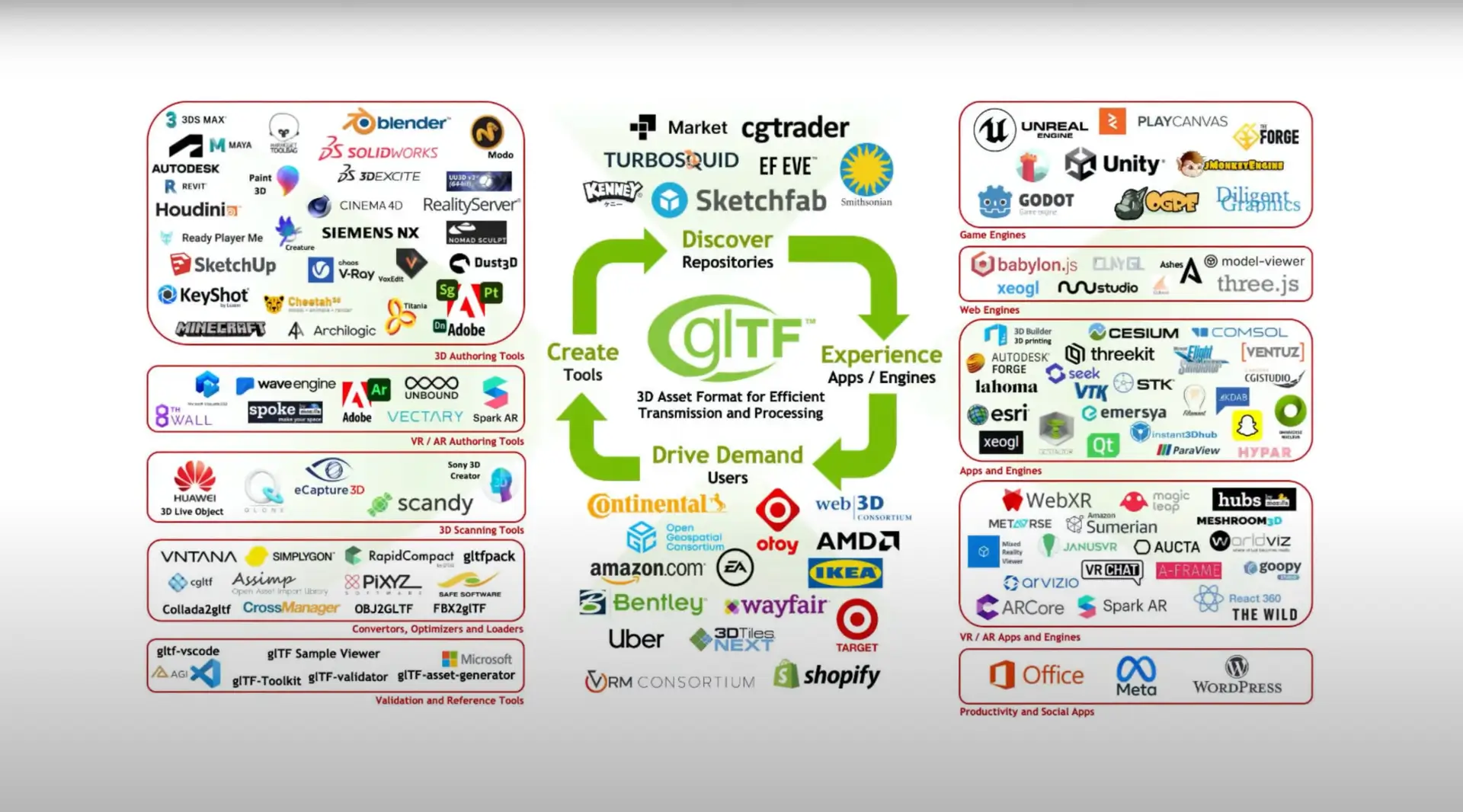Reimagining E-Commerce & Education with 3D GLTF

Introduction
In the rapidly evolving worlds of e-commerce and education, businesses and institutions are continually seeking innovative ways to enhance user experiences. One technology gaining significant traction in both domains is 3D GLTF (GL Transmission Format) models. These models are transforming how products are displayed online and how educational content is delivered, offering immersive and interactive experiences that static images or traditional methods can’t match. By incorporating 3D GLTF models, e-commerce platforms can provide customers with a more engaging and informative view of products, while educational platforms can offer students a deeper, more interactive understanding of complex concepts. Let’s explore how this cutting-edge technology is shaping the future of e-commerce product displays and educational experiences.
Overview of 3D GLTF Models
3D GLTF models are revolutionizing how we visualize and interact with digital content. Designed for efficient transmission of 3D models, GLTF is an open standard developed by the Khronos Group. Often called the “JPEG of 3D,” it offers a compact format for high-quality 3D representation with minimal file size. This cross-platform compatibility is valuable for e-commerce, virtual reality (VR), augmented reality (AR), and education. GLTF models support PBR materials, animations, and morph targets, enabling dynamic representations of objects. In e-commerce, they provide an immersive experience that enhances product displays. In education, 3D GLTF models let students explore complex structures like molecules in an interactive space, enhancing their learning experience.
Advantages of 3D GLTF Models in E-Commerce and Education
- Enhanced Engagement: 3D GLTF models offer a more interactive experience. In e-commerce, customers can explore products in detail, while in education, students can engage with content in ways that static images or text cannot provide.
- Improved Understanding: By providing detailed and accurate representations, 3D models help users make informed decisions—whether it’s a purchase or comprehending a complex concept.
- Reduced Return Rates and Misunderstandings: In e-commerce, realistic 3D views minimize discrepancies between product images and actual products, reducing returns. In education, clear and interactive models help reduce misunderstandings and enhance comprehension.
- Competitive Edge: Businesses and educational institutions using advanced technologies like 3D GLTF models stand out, offering experiences that are more engaging and informative.
- Cost-Effectiveness: Creating 3D models can be more cost-effective over time. Once created, these models can be reused across different platforms and applications, reducing the need for multiple resources.
- Augmented Reality Compatibility: 3D GLTF models easily integrate with AR, allowing for innovative applications in both e-commerce (like virtual try-ons) and education (such as virtual labs or interactive exhibits).
- Scalability: Whether expanding a product range in e-commerce or adding new content in educational platforms, 3D models can be easily scaled and adapted.
Enhancing User Experience with 3D Models
Both e-commerce and education are becoming increasingly competitive, and businesses and institutions are turning to 3D GLTF models to enhance engagement and satisfaction. These models provide an interactive, nearly tangible experience by allowing users to view products or educational content from every angle. This depth of interaction not only helps customers and students understand what they are engaging with but also sets the provider apart from competitors who still rely on static methods. The future of e-commerce and education is clearly leaning towards more interactive and immersive experiences, with 3D GLTF models playing a crucial role in this transformation.
Case Studies of Successful 3D Model Integration
One example in education is Google’s use of 3D models in Google Classroom, where students can explore interactive models of everything from cells to ancient architecture. This enhanced learning experience has been pivotal in engaging students more deeply with their studies.
In e-commerce, IKEA’s AR app allows users to place 3D models of furniture in their homes, significantly improving customer experience and sales.
Future Trends in 3D Content
The use of 3D GLTF models is set to expand, driven by advancements in AR, VR, and web technologies. In e-commerce, we can expect more retailers to adopt 3D models for enhanced online shopping experiences. In education, interactive 3D models will likely become standard in digital classrooms, helping students visualize and understand complex subjects more effectively. As these technologies evolve, the line between physical and digital experiences will continue to blur, making these interactive models essential tools in both fields.
Conclusion
3D GLTF models are revolutionizing e-commerce and education by offering dynamic, interactive experiences that traditional methods can’t match. For businesses, this technology enhances product displays, drives engagement, and reduces return rates. For educators, it opens up new avenues for interactive and immersive learning. As the digital landscape evolves, embracing 3D GLTF models will be crucial for staying ahead in both e-commerce and education. The future is immersive, and 3D technology is at the forefront of this transformation.


Comments are closed.